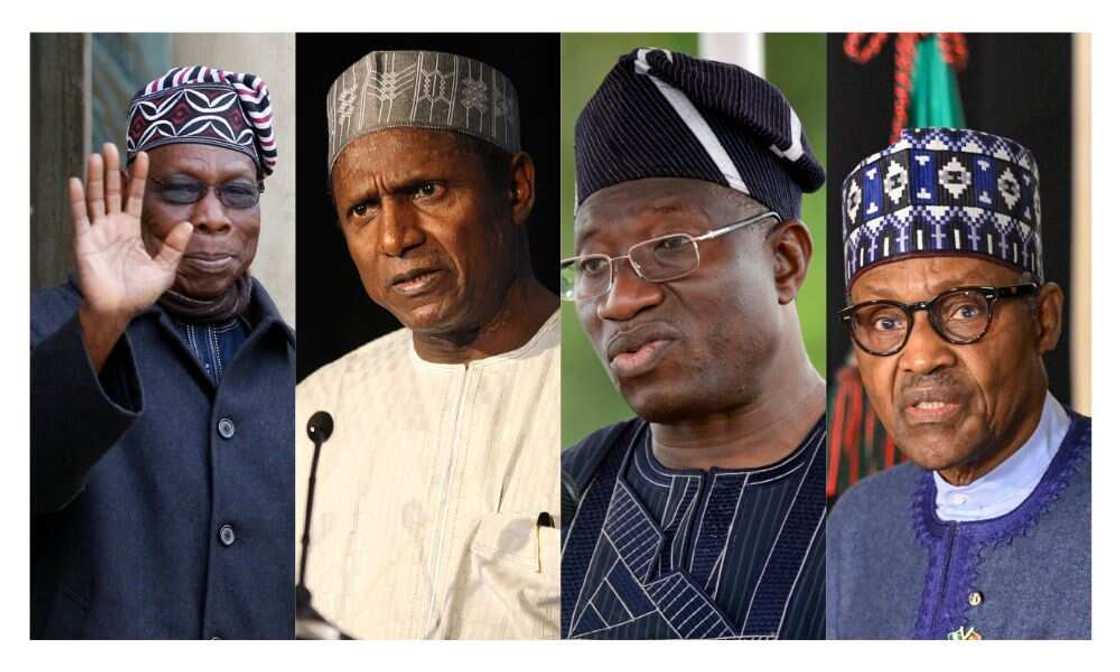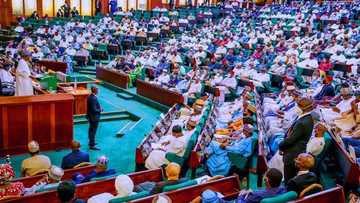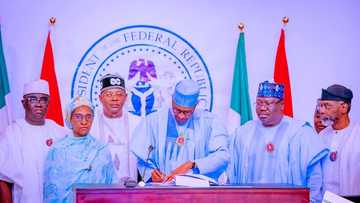From Obasanjo to Buhari: How Nigeria's Debt Ballooned 800% to N42.82 Trillion in Two Decades
- There has been an increase of 800 per cent in Nigeria's public debt in the last 22 years of the country's democracy
- From 1999 to 2022, under four presidents, Nigeria has witnessed increasing debt profile
- The World Bank and IMF, including other stakeholders have been sounding the alarm over the country's burgeoning debt level
Legit.ng is celebrating business personalities of 2022. See top entrepreneurs of Fintech, Startup, Transportation, Banking and other sectors!
In the past 22 years, Nigeria's public debt has been on the increase. Successive governments have embarked on a borrowing jamboree despite Nigeria securing debt relief under president Olusegun Obasanjo.
Nigeria's public debt has soared more than 800 per cent to N42.82 trillion in 2022.

Source: Getty Images
Internal bodies alarmed over Nigeria's debt level
The International Monetary Fund (IMF) and the World Bank have been sounding the alarm at Nigeria's ballooning debt profile amid poor revenue, saying the country's huge appetite for borrowing is a time bomb.
PAY ATTENTION: Share your outstanding story with our editors! Please reach us through info@corp.legit.ng!
Within two weeks of July 2021, the Nigerian Senate approved three different loans by President Muhammadu Buhari.
The Senate approved a loan request of N2.4 trillion request from Buhari on July 7, 2021, about $6 billion at the then prevailing exchange rate and another $8.3 billion and 490 million euros from Buhari.
The Debt Management Office (DMO) had said then that the borrowing was to finance the 2021 budget.
By March 2021, Nigeria's public debt had hit N33.1 trillion, about $87.24 billion.
FG's debt, an ever-widening gorge
President Muhammadu Buhari said he inherited N7 trillion from the administration of President Goodluck Jonathan. A claim that journalists fact-checked to be untrue.
Recent data shows that under Buhari, Nigeria's public debt has surged more than at any time in Nigeria's history.
According to a report by The Punch, Nigeria's Debt has climbed to $40 billion under Buhari.
A breakdown shows that there has been a spike of 288.18 per cent in the last seven years of Buhari's rule.
In 2015, the 36 states had about $3.27 billion in external debt, reports by the Debt Management Office (DMO) said, and the Federal Government owed about $7.05 billion.
By 2022, the 36 states' external debt rose to N$4.56 billion, while the Federal government incurred about $35.5 billion.
Nigeria's Debt under Jonathan
At the inception of the administration of ex-President Goodluck Jonathan, Nigeria owed about N6.17 trillion, according to reports by TheCable.
The then local debt was about N5.62 trillion, while foreign debt was $3.5 billion or N548.65 billion using the then exchange rate of N156.7 to a dollar.
By the end of 2015, the country's foreign debt hit N7.3 trillion, while domestic debt shot up by N8.4 trillion at the exchange rate of N197 to a dollar.
Borrowing under Yar'Adua/Jonathan
Under the administration of late president Umar Musa Yar'Adua and Goodluck Jonathan between 2007 and 2011, Nigeria's domestic debt by the federal government increased from N2.17 trillion to N5.62 trillion, and the external debt increased from $2.11 billion to $3.5 billion in that period.
Nigeria's exchange rate also moved from N116.8 per dollar to N156 per dollar.
The cumulative debt profile went up from N2.42 trillion to N6.17 trillion in four years, a 155 per cent increase.
Nigeria's Debt under Obasanjo
Under the administration of Olusegun Obasanjo, Nigeria's debt level went down from N3.55 trillion in 1999 to N2.42 trillion at the end of 2007.
Obasanjo's 8-year term decreased FG's local and foreign debt level, a 31.8 per cent decline.
The exchange rate was about N98.02 to N116.8 for a dollar.
Under Obasanjo, external debt went down from $28.04 billion in 1999 to $2.11 billion at the end of 2007 when he exited power. But the domestic debt increased from N789 billion to N2.17 trillion in the same period.

Read also
'We had to borrow”: Buhari begs lawmakers to accept restructuring CBN’s N23trn loan to FG, gives reasons
Debt stock: Nigeria's most indebted geopolitical zones in 2022
Recall that Legit.ng reported that according to data from the Debt Management Office (DMO), Nigeria's total debt stock has hit over N41 trillion as of March 2021.
The breakdown of the debt, tabulated by Legit.ng shows that the various states in Nigeria contribute immensely to the national debt stock.
According to reports, Nigeria's total public debt stock rose from N39.56 trillion in December 2021 to N41.60 trillion, $100.07 billion in the first three months of 2022, January to March, the Debt Management Office (DMO) revealed yesterday.
Source: Legit.ng




